How to Motivate Employees
Finding and onboarding skilled employees can take up a lot of energy, time, and resources. This makes retention all the more important to ensure that your business gets a return on its investment
To retain staff, it’s vital to your company’s long-term health to maintain employee motivation beyond the onboarding stage.
According to the ‘Living to Work’ research conducted by Motivates, the amount of employees claiming that they are unmotivated at work has risen by 11 per cent in one year alone.1 This begs the question: how can leaders motivate their employees to ensure this doesn’t happen in their own companies?
Although salary is important, it isn’t the only thing that can help retain employees.
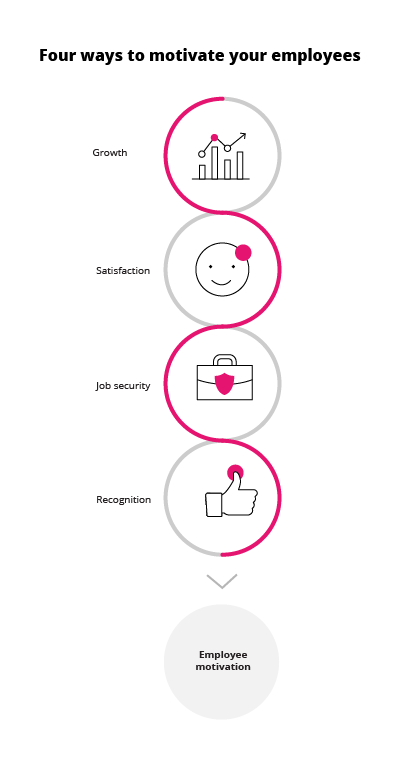
Create growth opportunities
The idea of growth within a company is a major motivating factor for employees deciding which business to join and for how long. About 25 per cent of unmotivated employees say that there’s no career progression for their role, and 18 per cent of these same employees stated that their work didn’t challenge them enough.2
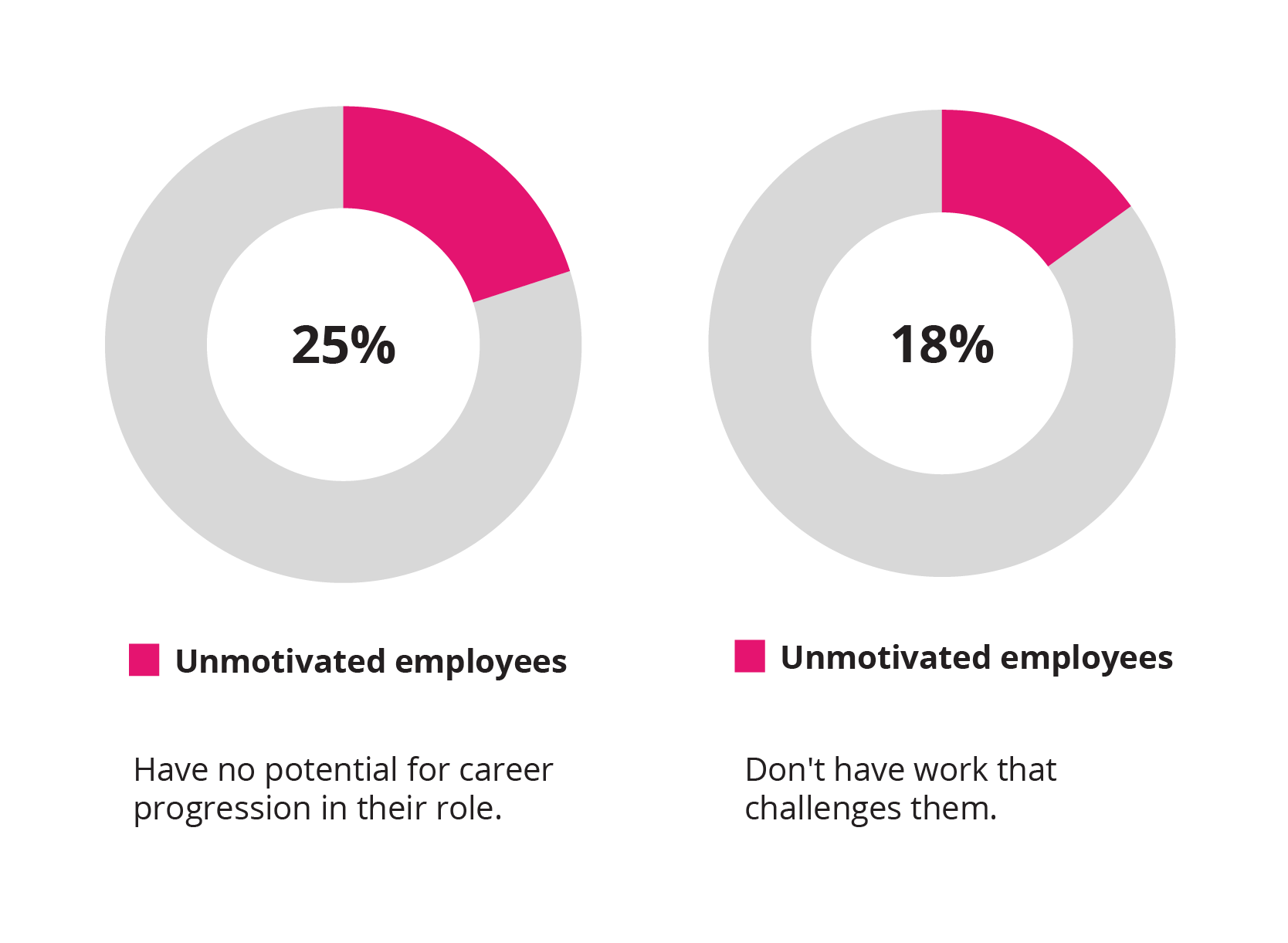
A significant source of motivation includes internal career progression and regular performance reviews to understand how employees wish to be challenged. Stagnant employees lead to stale ideas and underperformance. Employees with limited job scopes can easily feel as if they are just a gear in the machine, and are left believing their work is unimportant, which kills motivation in the workplace too.3 Stimulating employee growth is beneficial for the larger business too. The more knowledge staff gain, the better your company can evolve.
This is why training is vital. Training and development of your staff offers them an understanding of how to help the company operate, and encourages excitement about the company’s vision. Organisations that have no growth opportunities, or where growth is strained by too many junior staff, or too few available mid-senior positions, can expect employees to want to move on quickly.
Improve employee satisfaction
An environment that prioritises employee satisfaction can go a long way towards keeping your staff motivated. According to Entrepreneur Magazine, “Happy employees are more loyal to the company and its objectives, they go the extra mile to achieve goals and take pride in their jobs, their teams, and their achievements.”4
That said, salary and recreational activities shouldn’t be the only factors pushing employee engagement. Instead, human resources (HR) needs to understand and match the real needs of their employees. Some of the ways they can do this include:
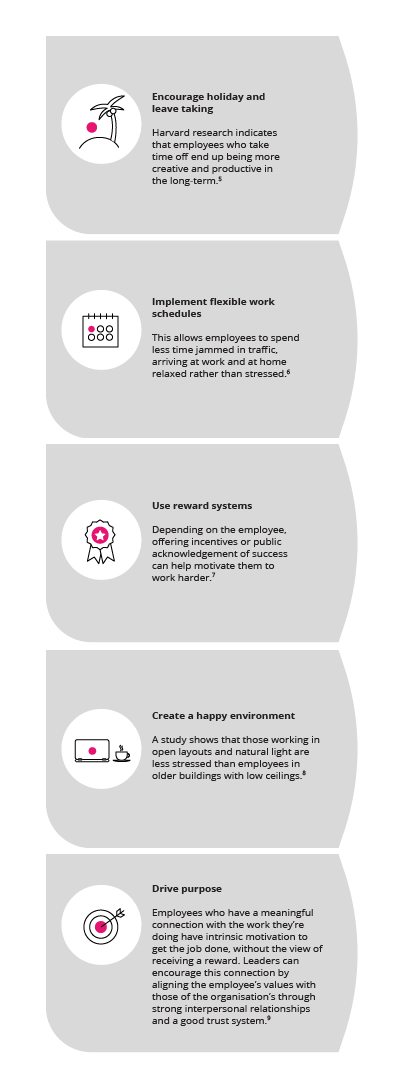
Provide job security
Individuals who are constantly worried about losing their jobs are unlikely to be able to produce their best work. If you want your employees to work to the best of their abilities, you need to let them know they’re valued, safe, and secure.
A recent study from Gallup confirms there’s a significant connection between job security and employee engagement.
In fact,
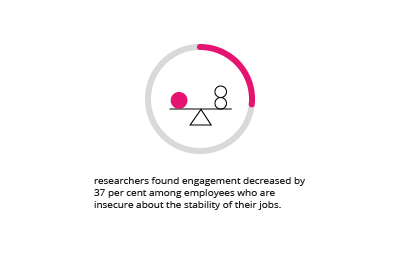
Brené Brown, author and University of Houston researcher, points out that while most companies insist on employees maintaining a creative, innovative mindset, employees need a safe space to fail, otherwise they tend to disengage.11
Failure needs to be an option from which employees can learn, to be motivated to experiment, and to innovate. The fear of failure causes anxiety over job loss, demotion, and losing peer respect. Instead, Brown insists that failure is essential to creative thinking.12
Offer recognition
According to research from Harvard Business School, feeling appreciated can play a huge role in employee motivation.13 However, managers often fail when it comes to showing staff recognition. In fact,
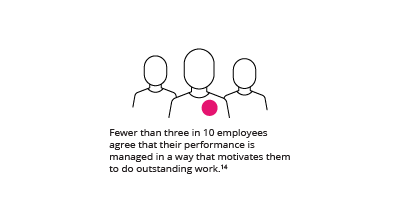
Without appreciation, employees begin to feel like a cog in the machine rather than a valued individual. Recognition confirms that their work is valued, which leads to higher levels of satisfaction, leading to more productivity.15 There are a number of opportunities for businesses to show employees that they are valued members of the organisation.
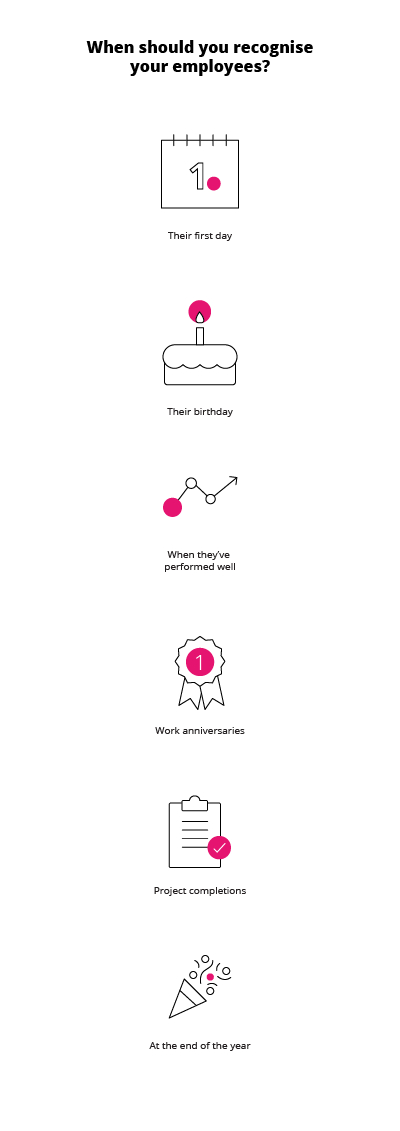
Self-worth plays a significant role in employee motivation, and this is supported by peer and manager motivation.16 Poor self-worth can lead to employees falling short of their potential or struggling to manage relationships with colleagues.17
Deloitte found that organisations with highly effective recognition programmes that encourage employee engagement had 31 per cent lower voluntary turnover than organisations with ineffective programmes.18
If you find that your employees are underperforming, leaders can motivate through growth opportunities, environments that allow for experimentation and failure, secure and purpose-driven business strategies, and recognition. These are effective steps to motivating – and retaining – employees for a successful future.
- 1 (2018). ‘Employee motivation report: Living to work’. Retrieved from Motivates.
- 2 Smail, J. (Oct, 2018). ‘Nearly a third of employees say they are not motivated at work’. Retrieved from Employee Benefits.
- 3 Feigenbaum, E. (Nd). ‘How does training motivate employees?’ Retrieved from Small Business Chronicle. Accessed 15 July 2019.
- 4 Bathena, Z. (Mar, 2018). ‘Why job satisfaction is an important phenomenon of the vicious circle’. Retrieved from Entrepreneur.
- 5 Gerdeman, D. (Jan, 2019). ‘Forget cash. Here are better ways to motivate employees’. Retrieved from Harvard Business School.
- 6 Gerdeman, D. (Jan, 2019). ‘Forget cash. Here are better ways to motivate employees’. Retrieved from Harvard Business School.
- 7 (Nd). ‘Employee reward and recognition systems’. Retrieved from Inc. Accessed 06 May 2020.
- 8 Murphy, J. (Apr, 2020). ‘21 Freakishly effective ways to motivate employees [updated for 2020]’. Retrieved from SnackNation.
- 9 Barnett, J. (Jan, 2020). ‘Here’s what happens when leaders get employee motivation right’. Retrieved from Forbes.
- 10 Nelson, B. (Aug, 2019). ‘Supportive managers relieve job insecurity, boost engagement’. Retrieved from Gallup.
- 11 Grigonis, H. (Jul, 2019). ‘Yes, failure is an option: How to use vulnerability to dare big and make creativity happen’. Retrieved from Creative Live.
- 12 Grigonis, H. (Jul, 2019). ‘Yes, failure is an option: How to use vulnerability to dare big and make creativity happen’. Retrieved from Creative Live.
- 13 Gerdeman, D. (Jan, 2019). ‘Forget cash. Here are better ways to motivate employees’. Retrieved from Harvard Business School.
- 14 Pendell, R. et al. (Jan, 2019). ‘10 Gallup reports to share with your leaders in 2019’. Retrieved from Gallup.
- 15 Harrison, K. (Nd). ‘Why employee recognition is so important – and how you can start doing it’. Retrieved from Cutting Edge. Accessed on 15 July 2019
- 16 Tanner, J. (Jan, 2017). ‘The psychology of motivating employees through training and development’. Retrieved from Training Industry.
- 17 Smail, J. (Oct, 2018). ‘Nearly a third of employees say they are not motivated at work’. Retrieved from Employee Benefits.
- 18 Robins, A. (Aug, 2016). ‘Employee recognition: The complete guide’. Retrieved from Office Vibe.
